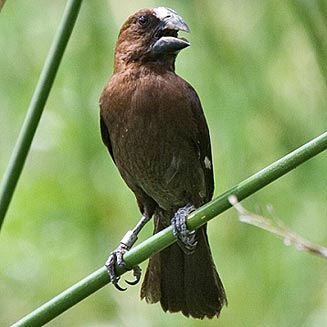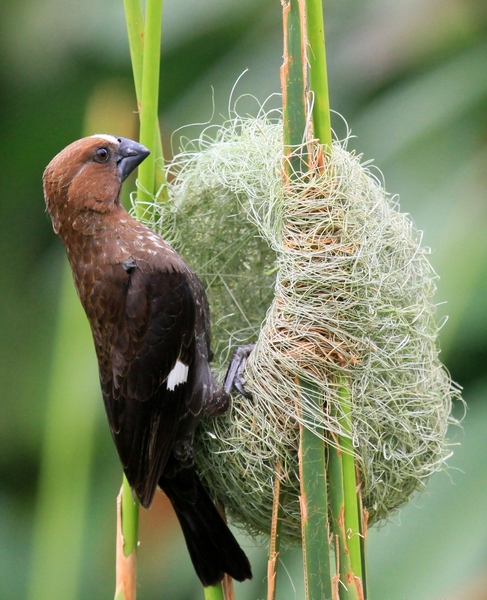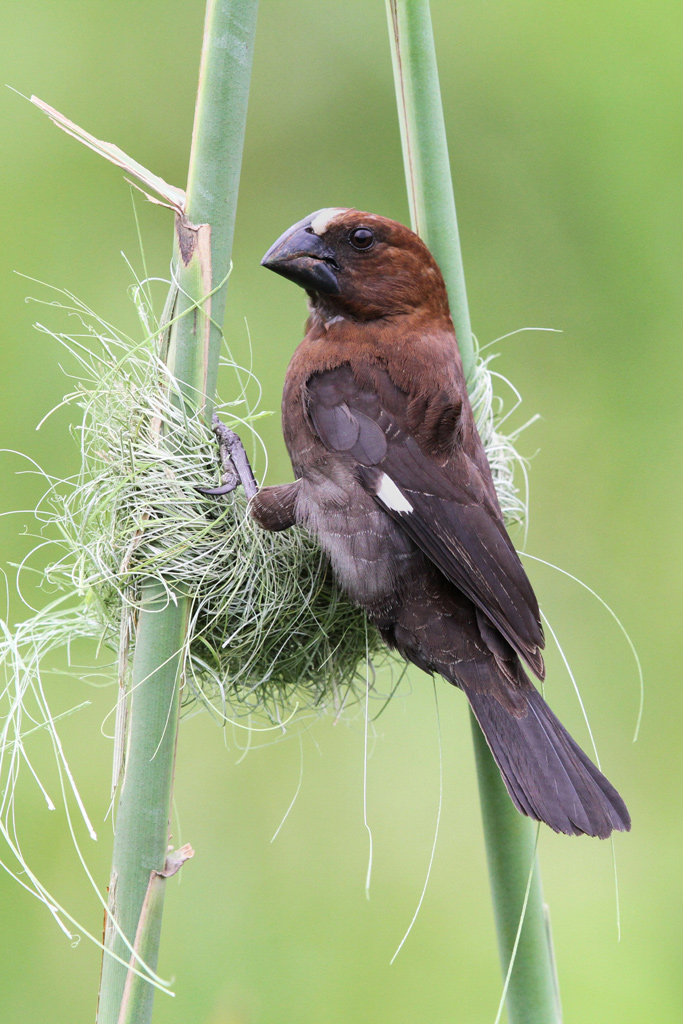
Amblyospiza albifrons
SUBFAMILY
Ploceinae
TAXONOMY
Pyrrhula albifrons Vigors, 1831, Algoa Bay, Eastern Cape,
South Africa.
OTHER COMMON NAMES
English: Grosbeak weaver; French: Grosbec а front blanc;
German: WeiЯstirnweber; Spanish: Tejedor de Pico Grueso.
PHYSICAL CHARACTERISTICS
6.7–7.5 in (17–19 cm); female 1.1–1.6 oz (31–45 g), male 1.5–2.1
oz (43–60 g). Breeding male chocolate brown with white forehead,
white patch in wing conspicuous in flight. Heavy black
bill. White on forehead variable, absent in non-breeding
plumage. Female has brown upperparts, underparts white heavily
streaked with brown. Heavy yellowish bill. Juvenile like female,
more rufous above and buffy below. Bill dull brown.
DISTRIBUTION
Sierra Leone east to southern Sudan, western Ethiopia, south
to northern Namibia, northern Botswana, eastern Zimbabwe,
and eastern South Africa.
HABITAT
Reedbeds, cultivated areas, plantation, and forest.
Resident
Amblyospiza albifrons
into summer. Incubation 11–13 days, fledging 17 days. Both
sexes incubate and feed young, but female contributes more.
CONSERVATION STATUS
Not threatened; extensive range, and well-represented in conservation
areas.
SIGNIFICANCE TO HUMANS
None known.
Other popular Animals
Photo Gallery of - Thick-billed weaver




 Animalia Life
Animalia Life